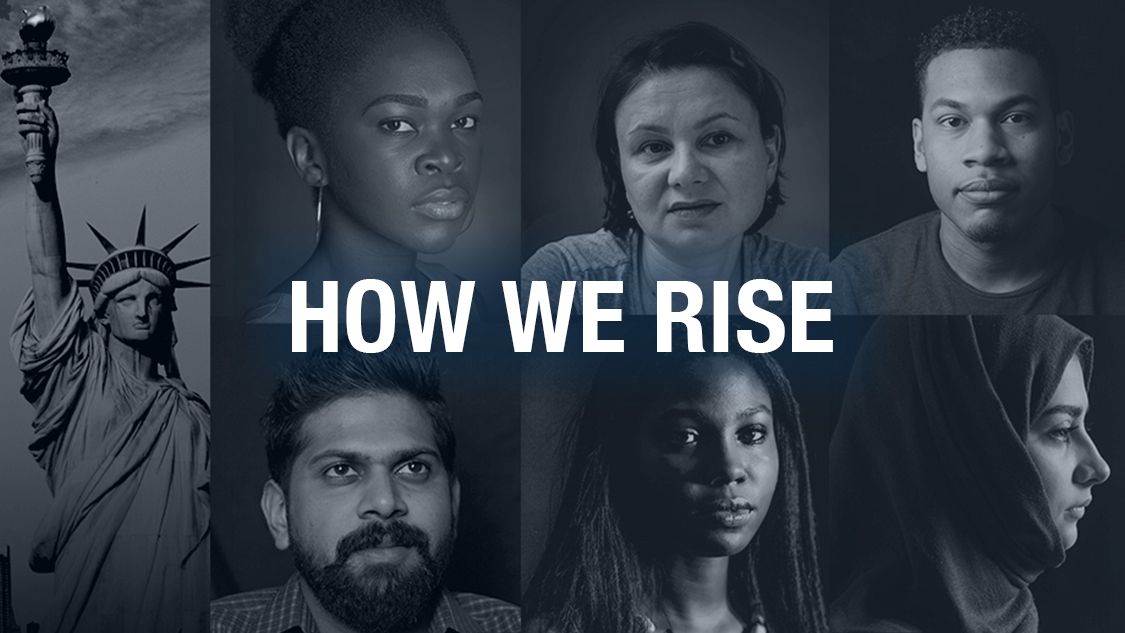In 2020, the Race, Prosperity, and Inclusion Initiative completed two research projects on the role of social networks in economic mobility, one project based in Charlotte, NC and the other based in three cities (Racine, WI; San Francisco, CA; and Washington, DC). The purpose of this research was to better understand how the social networks of groups of diverse individuals are related to economic outcomes and opportunities such as jobs, stable housing, and education.
In this research, “social networks” refers to the set of personal relationships which individuals rely on for resources, information, advice, and help. These four locations were selected due to their diverse economic mobility profiles. We hypothesized that social networks of individuals vary in terms of their size, composition, function, and formation based on an individual’s own characteristics, including their race, gender, and income. We also hypothesized that social networks are linked to outcomes in employment, housing, and education by providing social capital in the form of resources, advice, information, or help that may tie to economic mobility.
We were motivated by previous research which showed that local dynamics appear to drive economic mobility. While we now understand more about the dynamics of economic mobility, we were not able to identify data that could explain how social networks function for low SES populations or for communities of color in the domains important to economic mobility. We also did not have data on the conditions under which these social networks might confer opportunities for economic mobility. Our projects were focused on filling this vacuum. Over the course of 6 months, which coincided with the onset of the COVID-19 crisis, we analyzed over 30,000 interpersonal network connections drawing on data from 431 interview participants across all four cities to understand how social networks are linked with economic outcomes. Our main findings were:
1. Race is the most important and consistent differentiator of social networks. For example, In Washington DC, 97% of people in white men’s job networks were also white. The graphic below depicts the racial homogeneity of social networks in Charlotte, NC.
 2. Across all four cities, Black males tended to have the least robust networks for jobs, education, and housing. In Charlotte, Black men typically relied on just one person on average for support. Similarly, Latinos had relatively thin and small networks mostly reliant on family members with Latinas (Hispanic women) being the least ‘networked’ within this racial group.
2. Across all four cities, Black males tended to have the least robust networks for jobs, education, and housing. In Charlotte, Black men typically relied on just one person on average for support. Similarly, Latinos had relatively thin and small networks mostly reliant on family members with Latinas (Hispanic women) being the least ‘networked’ within this racial group.
3. Outside of family, jobs, education, and housing, networks were primarily formed through work and education settings (college or K-12 schooling). Community activities were also mentioned as a means through which social networks are formed, specifically in San Francisco.
4. Low-income participants in Charlotte and San Francisco had small social networks. Higher-income groups also had fewer people in their networks, but those contracts were very reliable for information, advice, networking, and providing references.
Policy Opportunities
One of our principal goals in conducting the research was to ensure that local communities contributed to and were aware of the findings of the projects. We intentionally partnered with local leaders and local non-profits to share the intentions of the study, to solicit suggestions about what to include in the interview questions and to share the final results as broadly as possible. We did this in the hope that the local communities would attain a sense of ownership of the results and be empowered to lead on solutions.
From a policy perspective, the results suggest that there are numerous ways of addressing racialized and economic status-based social networks. What can be done? While we do not offer a blueprint for building social capital, we do suggest some potential paths forward to achieve equitable social networks in these cities.

1. De-segregate communities
On a national scale, residential segregation has declined in the past few decades, but patterns of residential segregation are still prevalent in the cities we studied. The most common measure of segregation, the dissimilarity index (with 0 indicating the lowest level of segregation and 100 being the highest) shows what share of one racial group would have to move to another neighborhood in order to achieve a uniform distribution of races across a city. The table below shows the white-Black dissimilarity index across our cities of study.
White-Black Segregation in Select Cities (Census 2000)
| City | White-Black Dissimilarity Index | |
| 1980 | 2010 | |
| Washington, DC | 71.4 | 64.1 |
| Charlotte, NC | 73.4 | 53.4 |
| San Francisco, CA | 62.5 | 52.8 |
| Racine, WI | 63.7 | 36.6 |
Source: Diversity and Disparities Project, Brown University
The strong racial homogeneity in social networks in the four cities reflects a range of public policy choices made over the last few decades that have essentially maintained spatial segregation. These public policy choices are most evident in housing and educational policies. Since racially homogenous social networks reflect racial segregation, city governments can make a commitment to creating more inclusive communities by undoing racist housing policies, changing restrictive zoning rules, desegregating public housing units, addressing transport inequality, and focusing on transformative placemaking.
2. Focusing on Black boys and men
One of our key findings was that Black men had the least robust social networks. Our results also suggest that most social networks for jobs and education were formed at school or at work. The thin social networks we observed for Black men reflect policy choices that have had the effect of removing Black males from the domains and moments that are critical for forming robust and reliable social networks.
In all our cities of study, Black students were more likely to be suspended compared to their white counterparts as shown in the figure below. Additionally, male students were more likely to be suspended in all four cities.

City governments must set an explicit goal to support the development of Black boys. This should start with an effort to drive down school suspension rates among Black boys. Keeping Black boys in school and building a culture of care in place of a dismissive suspension and punishment culture can go a long way in ensuring that public schools are adequately serving the needs of Black boys. Additionally, some localities are exploring mentorship programs for Black boys to help them navigate academic and non-academic environments. Local governments can also partner with local community organizations and businesses to further support the needs of Black boys. This effort needs to be coordinated across government entities, co-owned by communities who are most negatively affected by the current aggressive disinvestment in Black boys and must be pursued with a sense of urgency.
3. Enhancing paths into the workplace
Our research showed that the workplace is a place where crucial social connections for jobs and education opportunities are formed. A white female interview participant in Racine summarized how social networks formed at work can be helpful for finding other job opportunities:
“[My old boss] warned me beforehand [that the company was closing]. Then I told her I was going to look for [another job]. She wrote me recommendation letters. She gave me time off of work for interviews when I didn’t actually have time off. … So that’s how she helped me…” – white female, Racine, WI
The U.S. unemployment rate was 6.2% in February 2021. This is lower than the 14.8% unemployment rate witnessed in April 2020 at the beginning of the COVID-19 pandemic, but it remains higher than the pre-pandemic unemployment rate. Research by our colleague, Stephanie Aaronson, suggests that the unemployment rate significantly understates labor market deterioration. Thus, identifying and executing policies that will improve the chances of getting back to stable and well-paying jobs for minority and low-income workers is important. Robust social connections formed at the workplace can provide resources, advice, information, or help that is linked to chances of economic mobility for these workers and their families in a post-pandemic world. Such policies include improvements in higher education, federal worker training programs, and supporting labor unions.
Policymakers and civic leaders have the opportunity to create what we call a “horizon community” in their cities, where the possibility of economic mobility is equitably distributed and where the flow of resources and social capital allow all residents to experience expanded horizons and well-being.
The Brookings Institution is committed to quality, independence, and impact.
We are supported by a diverse array of funders. In line with our values and policies, each Brookings publication represents the sole views of its author(s).











Commentary
Social networks and economic mobility–what the findings reveal
March 9, 2021